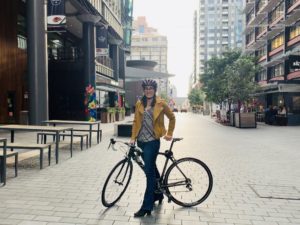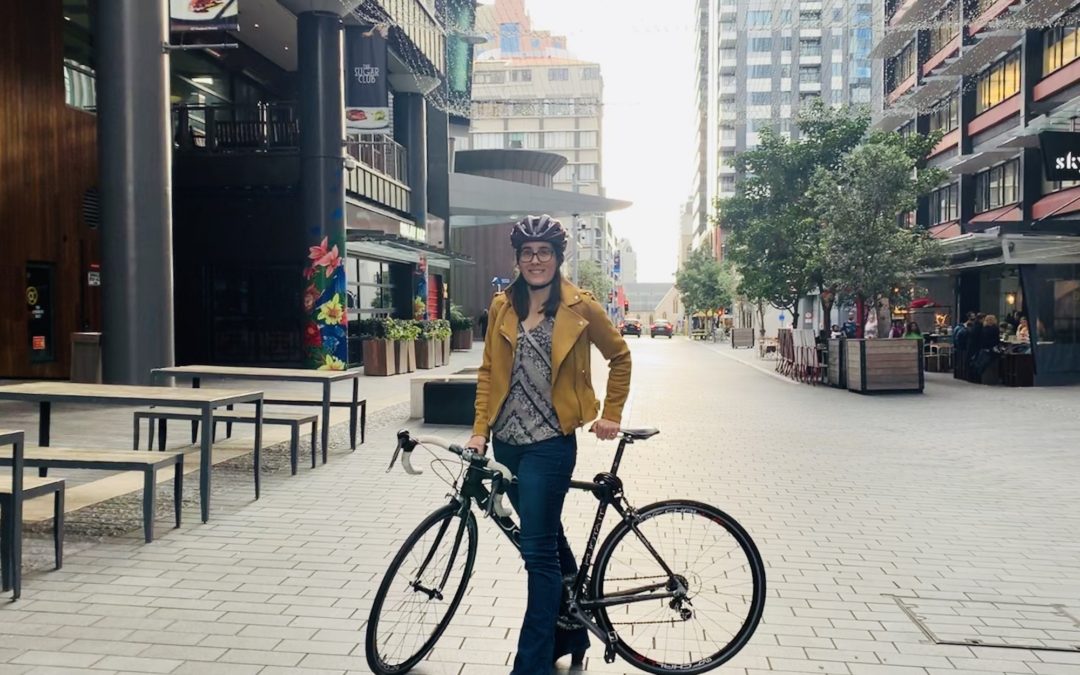 Julie Sandilands, City Vision Candidate for Waitemata Local Board shares her thoughts on what next now Auckland has declared a Climate Emergency
Julie Sandilands, City Vision Candidate for Waitemata Local Board shares her thoughts on what next now Auckland has declared a Climate Emergency
We’ve done it: Auckland City Council has declared a climate emergency. Great. We’re working on the Auckland Climate Action Plan, and the Zero Carbon Bill is in the works at a national level (you have until July 16 to make a submission). Our major newspapers have made commitments to reporting and using accurate language on climate change.
You can feel it: in 2019, we’re hearing and talking about climate change more than ever before.
But, it seems, all we’re doing is talking.
Where are the initiatives, the trial projects, the action?
Now that we have officially declared a climate emergency, is anything going to change?
Will Auckland in ten years’ time be different to today?
From the work already underway and what we can expect from current trends, we can guess what Auckland will look like in ten years’ time. Some things will be great. We will travel in much healthier ways: The City Rail Link will be complete, we’ll have more bus routes and significantly more cycle lanes (but fewer cycling injuries!), and public transport fares may be cheaper.
But Auckland will continue to grow outwards as well as upwards, people in the outer suburbs will still have multiple cars per household, and house prices will mean more people commuting from Hamilton and further afield.
A greater proportion of our cars will be electric, but electric cars have high CO2 emissions during manufacture (including extraction of the materials used in the batteries), so this is a mixed blessing, especially as battery recycling may or may not be common place or particularly effective at reducing the need for primary material extraction/mining.
More of us will work from home as flexible working arrangements become more common, which will decrease road congestion and the number of journeys we make, but will increase the energy usage of homes that would otherwise be unlit and unheated during the day.
Our plastic consumption will be less than today: plastic straws, bottles and bags will be banned, but our consumption of plastic toys, clothing, packaging and plastic-containing devices will likely be unchanged. We’ll continue to fill up landfills with our waste, with increasing risk of contaminating our drinking water and our environment during extreme weather events.
More of our homes will be properly insulated, which will reduce our winter energy consumption.
Globalisation will continue to increase the food miles of our fruit and vegetables, and our meat and dairy consumption will be only slightly lower than it is today (the reduction will be due to more individuals choosing plant-based diets).
The net result? Auckland will still be a significant climate polluter, with positive net emissions likely in the range of hundreds of kilo-tonnes of CO2 every year.
But we can do it better. With just a bit of vision, we can transform our city over the next ten years.
What will our climate-friendly Auckland look like in 2029?
Public transport will be so cheap, even a whole family or a group of friends will save money choosing public transport over a car.
Bus lanes will be prolific. It will be faster to get most places by bus than by car. Cycle lanes will be separated, and will get you all the way from A to B without any need to use a shared road. People will feel safe cycling. Public investment will result in regular activities and events that encourage and reward cycling. Cycling will be cool, driving a car will be the old-fashioned choice. All suburban centres will be car-free, local shops will thrive and people will be more connected to their local community. Our streets will have more trees, more benches, more social spaces, and fewer carparks.
More food will be grown and sold locally. Changes in public spending, focus and the global economic climate mean it will be more profitable to use land to produce fruit, vegetables and other crops than meat and dairy.
Apartment living will no longer mean an isolated 50m2 unit. Communities will be based on local, liveable apartments with communal parks and gardens. We will have two shared cars per block instead of two per household. With apartment living more attractive, we’ll significantly reduce our environmental impact.
We will invest heavily in initiatives that promote waste reduction, waste reuse and ‘urban mining’. Auckland will be at the forefront of waste-reinvestment technologies, with a number of established businesses and emerging start-ups. We will send nothing to landfill, and companies will be responsible for the totality of the waste their products produce, across the life cycle.
And (this is a stretch goal) we will no longer fly between cities – why would we when high-speed rail can get us from Queen Street to Lambton Quay in three hours, without the need to check-in or go through security.
We’ll be more connected, fitter, healthier, and we’ll live in a sustainable, future-proofed city.
This future is possible. No part of it is outrageous or requires great sacrifice. All that is needed is vision, and the determination to see it happen.

